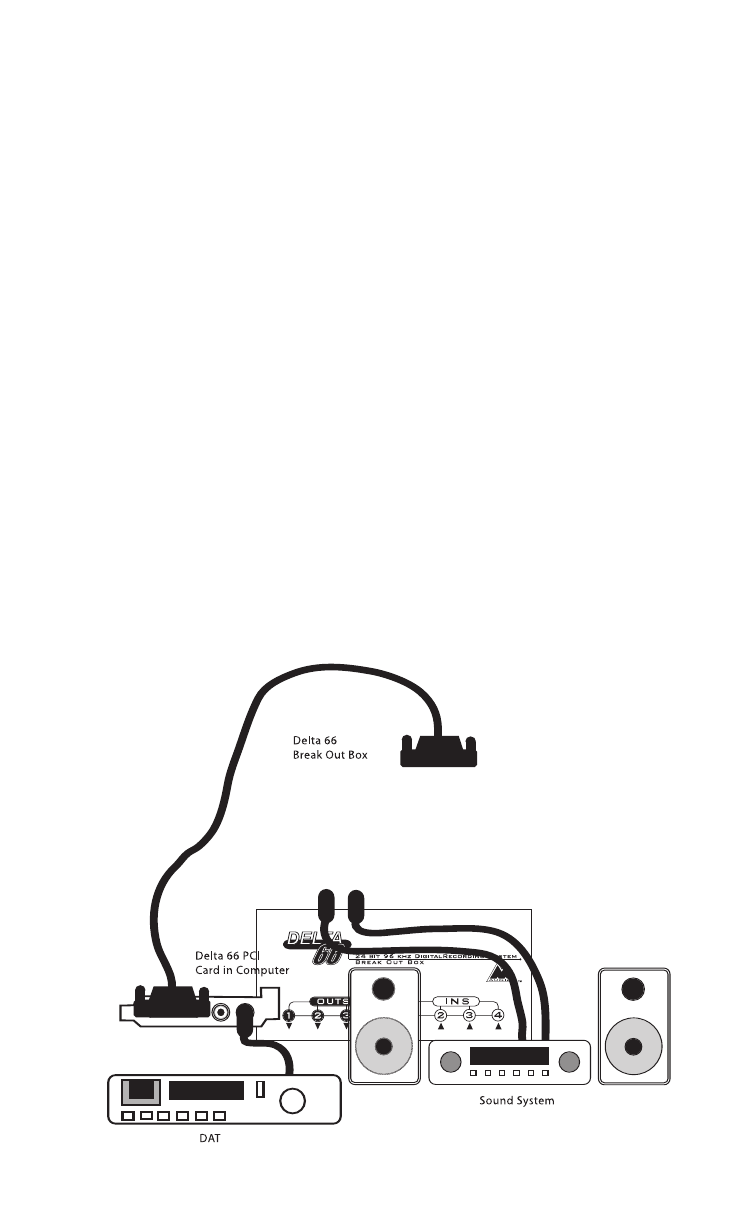
Using the Delta 66 and the Delta Control Panel software in this manner may be your
choice when using a mixing console to control the monitor and playback levels. If
this were a real recording situation and you wished to add other instruments as
overdubs, you might want to combine recorded tracks to one stereo pair of outputs
(WavOut 1/2 Delta-66, for example). This would ‘free up’ several channels for
monitoring the overdubs.
Typical Setup #3
Let’s look at a setup that involves a typical transfer of information from DAT to
computer and back to DAT. Here, we’ll be using the Delta 66’s S/PDIF I/O plus
one of the analog output stereo pairs.
NOTE: Because improper connections can potentially make
very loud noises, it’s a good idea to have monitor levels down
while hooking up audio equipment — you may even choose to
turn your computer off before making the connections.
In this example, we will connect a DAT to the Delta 66 PCI host card using coaxial
S/PDIF cables (75-ohm impedance RCA-to-RCA). We’ll also connect the
Delta 66’s analog outputs to a sound system for monitoring purposes. A setup like
this might be used to transfer a number of mixes from a DAT into an audio editing
program, performing the appropriate edits, and then transferring the edited material
back to DAT.
The example below may at first look long and laborious, but you will find that most
of the settings are factory defaults and will rarely need to be modified.
36


















